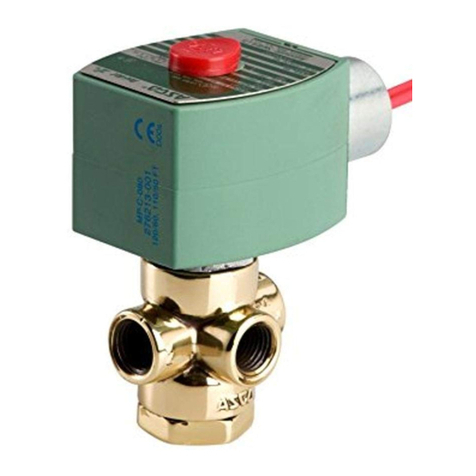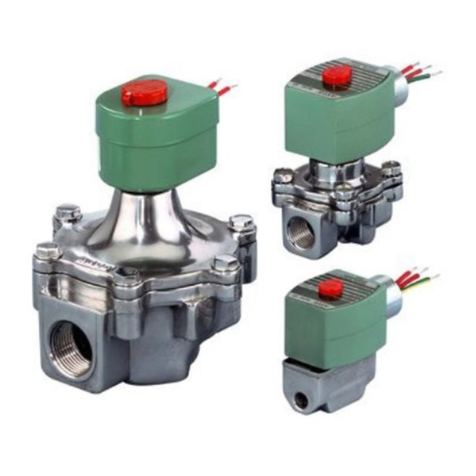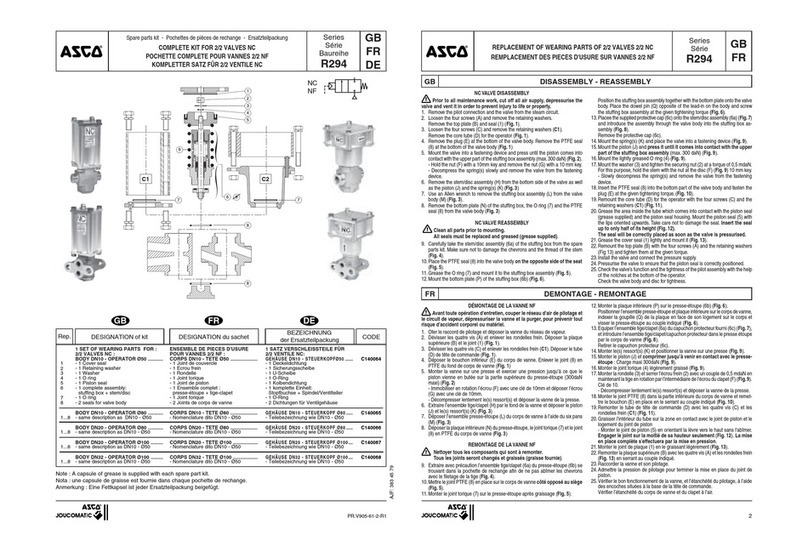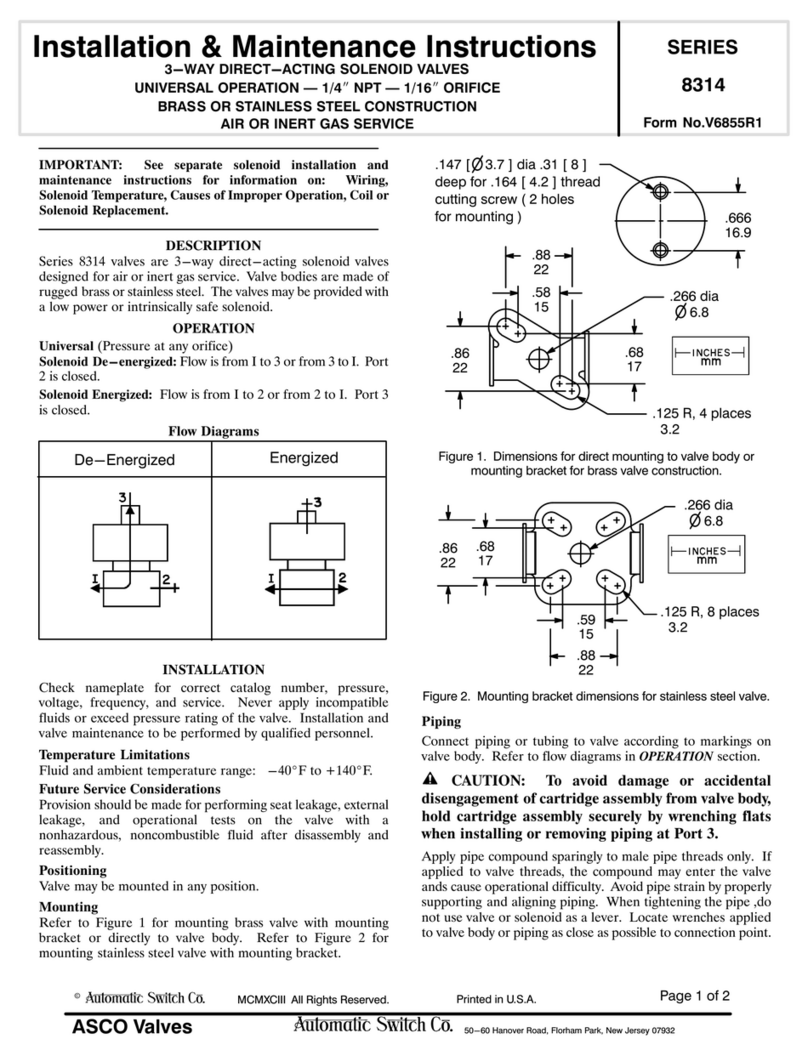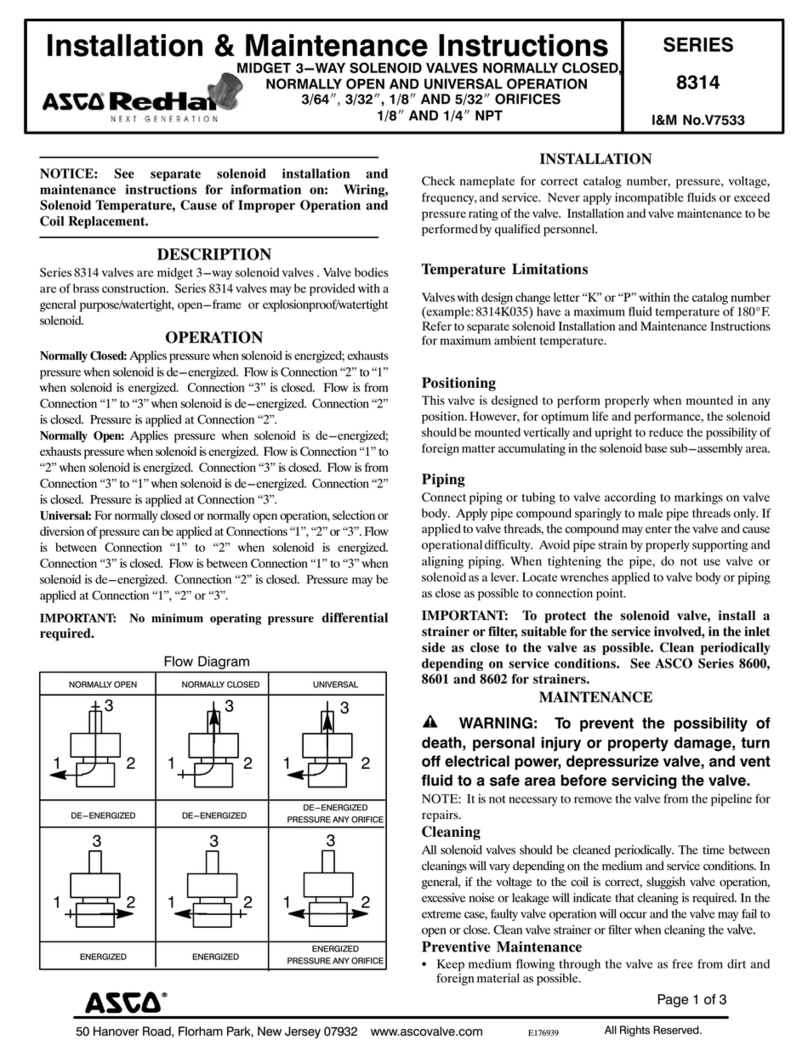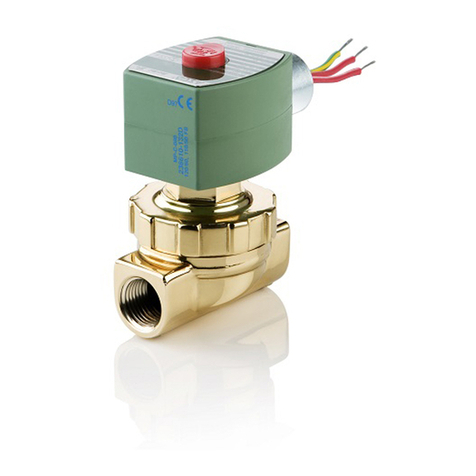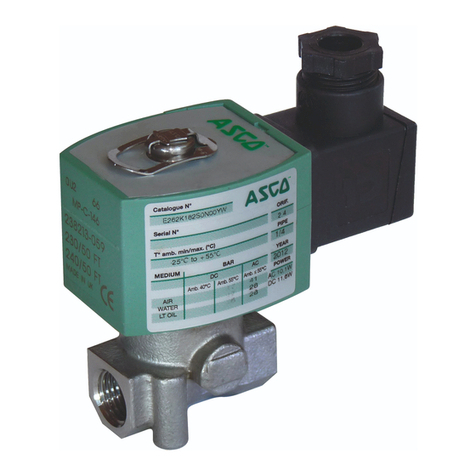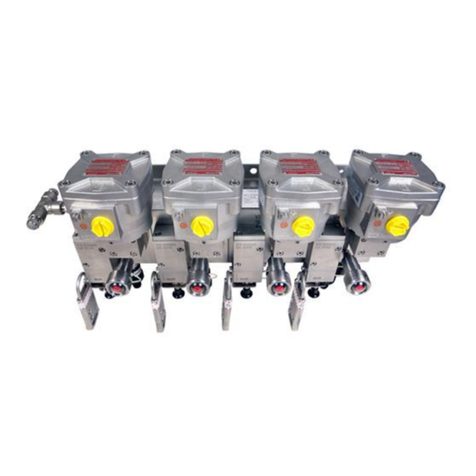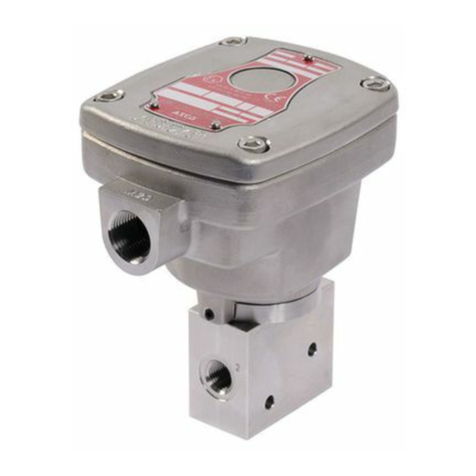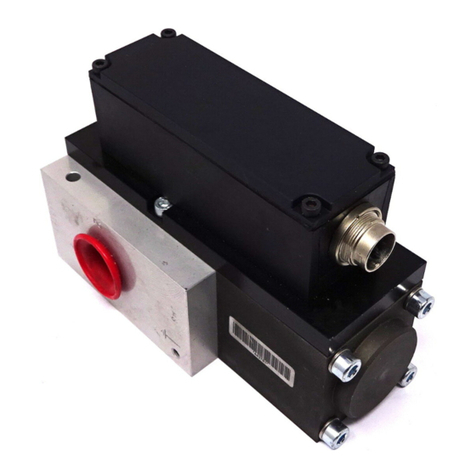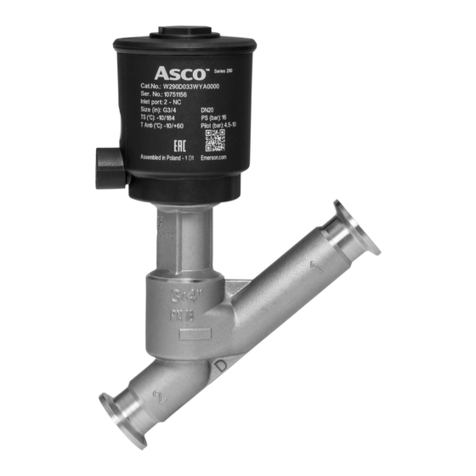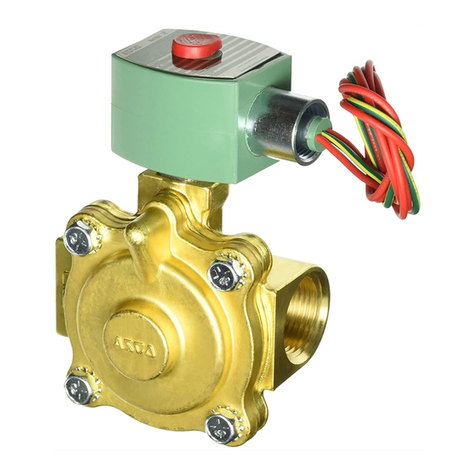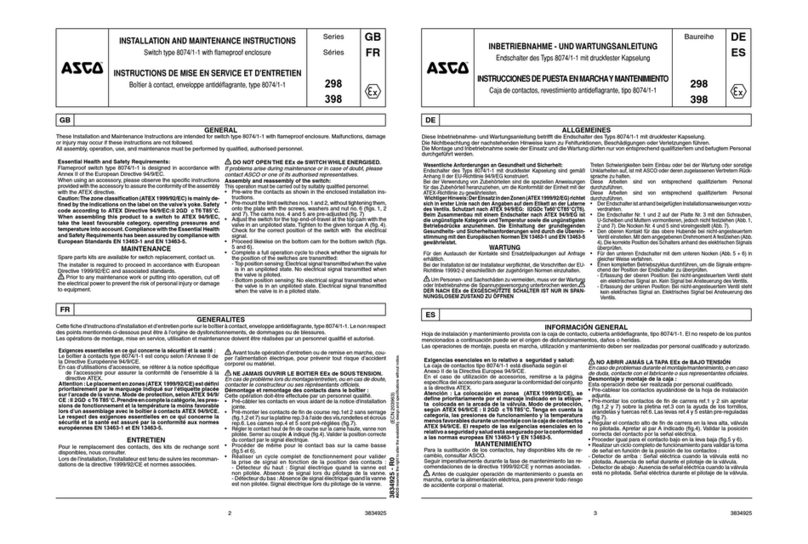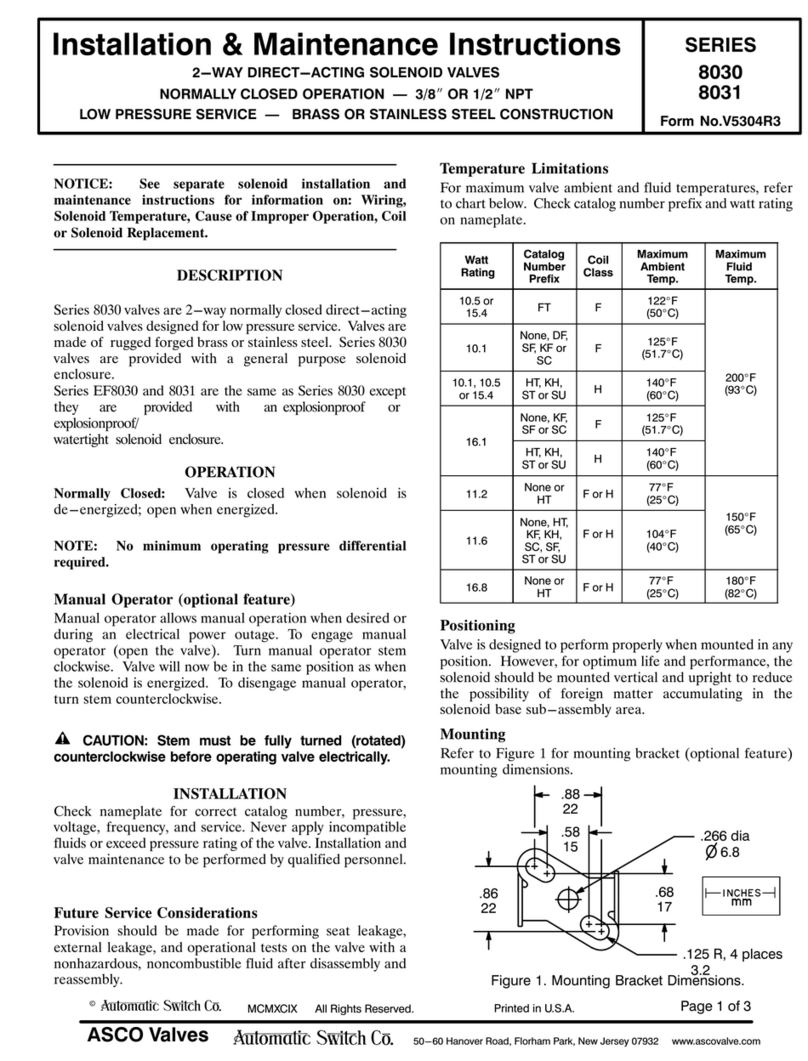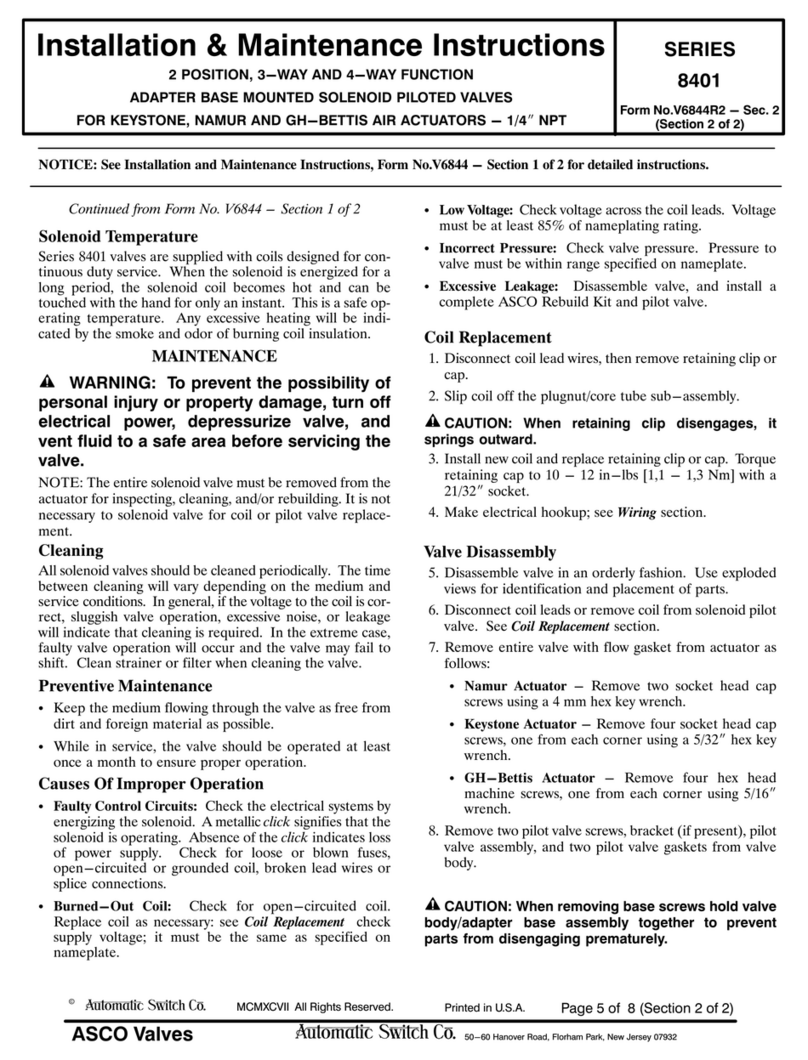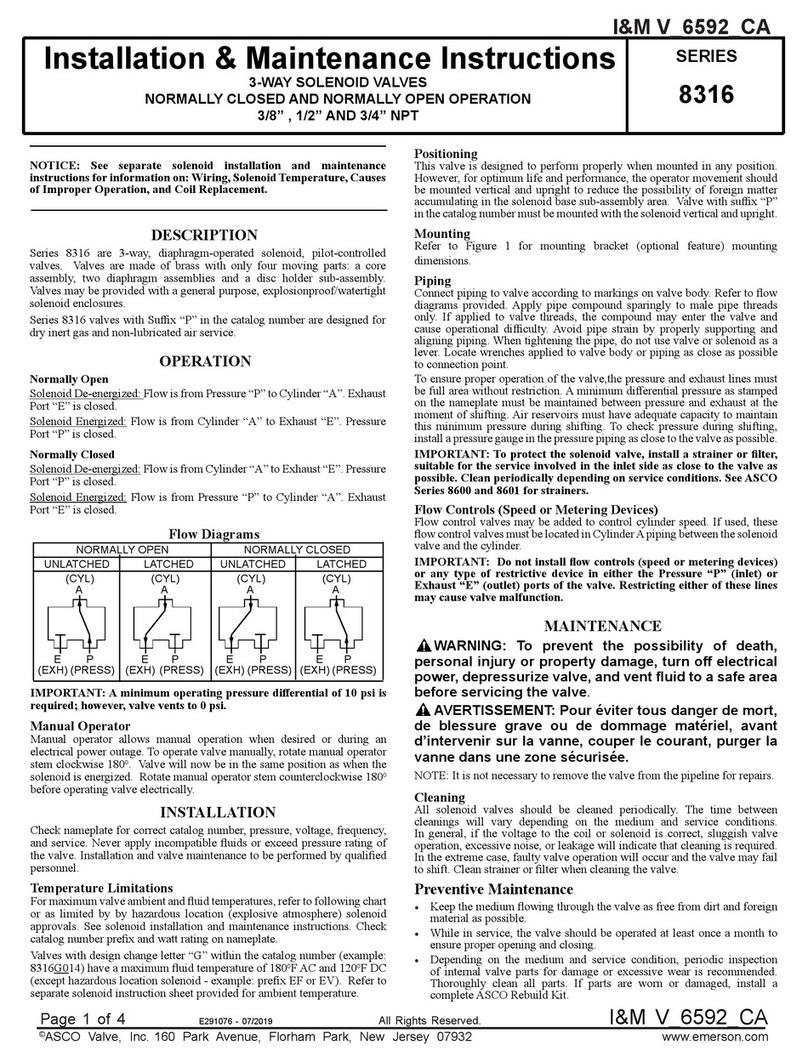
Page 1 of 3
50 Hanover Road, Florham Park, New Jersey 07932 www ascovalve com All Rights Reserved
E176965
Installation & Maintenance Instructions SERIES
I&M No.V7536
8317
3-WAY UICK EXHAUST SOLENOID VALVES
NORMALLY CLOSED AND UNIVERSAL OPERATION
1/4I NPT
IMPORTANT: See separate solenoid installation and
maintenance instructions for information on: Wiring, SoleĆ
noid Temperature, Causes of Improper Operation, and Coil
or Solenoid Replacement
DESCRIPTION
Series 8317 Valves are direct acting, packless, 3-way solenoid valves.
Valve odies are either rass or stainless steel with integral seats. A
core, disc, spring assem ly and diaphragm are the only moving parts.
Valves may e provided with a general purpose/watertight, open-
frame or watertight/explosionproof solenoids.
OPERATION
The solenoid pilots the quick exhaust" diaphragm y using the unĆ
alanced pressure principle. When the pressure orifice is open, the
main and pilot exhaust orifices are closed. When the pressure orifice
is closed, the main and pilot exhaust orifices are open.
Normally Closed:
Solenoid De-energized: Flow is from Cylinder 1" to Main Exhaust
4". Pilot Exhaust is open. Pressure 2" is closed.
Solenoid Energized: Flow is from Pressure 2" to Cylinder 1", Main
Exhaust 4" and Pilot Exhaust 3"are closed.
Universal:
Pressure at 2": Refer to Normally Closed a ove.
Pressure at 3": Refer to Normally Open a ove.
Universal construction is interchangea le with Normally Closed in
the field y merely changing pipe connections.
IMPORTANT: A minimum operating pressure differential
of 5 psi on Air, Gas and Water and 10 psi on Hydraulic oil
(300 S S U ) is required
NORMALLY CLOSED
DE-ENERGIZED ENERGIZED
UNIVERSAL (PRESSURE AT 2") (PRESSURE AT 3")
DE-ENERGIZED ENERGIZED DE-ENERGIZED ENERGIZED
UNIVERSAL
1
2
3
4
2
3
4
2
3
4
2
3
4
2
3
4
2
3
4
PRESS PRESS
CYL
1
CYL
PILOT
EXH
PILOT
EXH
MAIN EXH MAIN EXH
1
CYL
1
CYL
1
CYL
1
CYL
PILOT
EXH
PILOT
EXH
PRESS PRESS
MAIN EXH MAIN EXH MAIN EXH MAIN EXH
PILOT
EXH PILOT
EXH
PRESS PRESS
NOTE: Port markings 1, 2, 3 and 4 correspond directly to A, B, C and
C2.
INSTALLATION
Check nameplate and solenoid marking for correct catalog num er,
pressure, voltage, frequency, and service. Never apply incompati le
fluids or exceed pressure rating of the valve. Installation and valve
maintenance to e performed y qualified personnel.
Future Service Considerations
Provision should e made for performing seat leakage, external leakĆ
age, and operational tests on the valve with a nonhazardous,noncomĆ
usti le fluid after disassem ly and reassem ly.
Temperature Limitations
Valves with design change letter K" or P" within the catalog numĆ
er (example: 8317K007) have a maximum fluid temperature of
180F. Refer to separate solenoid Installation and Maintenance InĆ
structions for maximum am ient temperature.
Positioning
This valve is designed to perform properly when mounted in any posiĆ
tion. However, for optimum life and performance, the solenoid
should e mounted vertically and upright to reduce the possi ility of
foreign matter accumulating in the solenoid ase su -assem ly area.
Piping
The pressure and exhaust lines must e connected as indicated in the
flow diagram for the particular application. Full size piping must e
used.
On Normally Closed Valves, the 3" connection is a Pilot Exhaust and
may e connected to a Common Exhaust with the 4" connection.
IMPORTANT: Pilot Exhaust 3" on Normally Closed form
must be connected at the installation into the piping to the
Main Exhaust 4" when controlling fluids such as liquids or
flammable gases that are not permissible to exhaust to atĆ
mosphere
Connect piping to valve according to markings on valve ody. Apply pipe
compound sparingly to male pipe threads only. If applied to valve
threads, the compound may enter the valve and cause operational diffiĆ
culty. Avoid pipe strain y properly supporting and aligning piping.
When tightening the pipe, do not use valve or solenoid as a lever, Locate
wrenches applied to valve ody or piping as close as possi le to conĆ
nection point.
IMPORTANT: To protect the solenoid valve, install a strainĆ
er or filter suitable for the service involved, in the inlet side
as close to the valve as possible Clean periodically dependĆ
ing on service conditions See ASCO Series 8600, 8601 and
8602 for strainers

